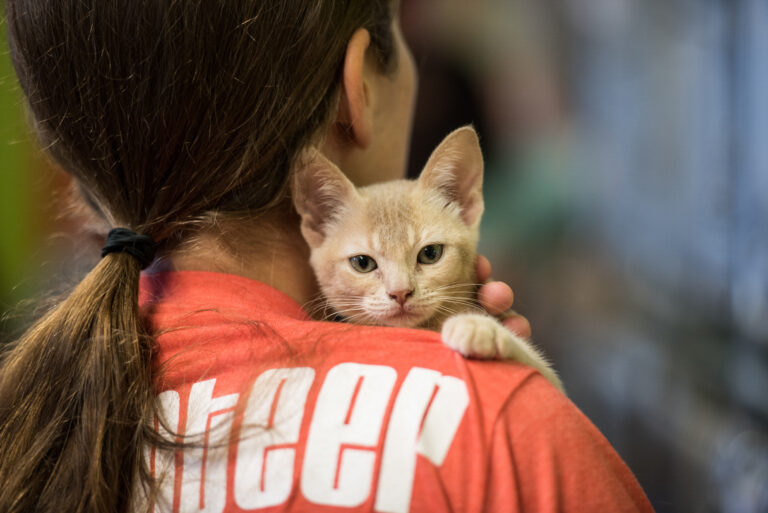When people think of training pets, dogs usually come to mind. However, cats are just as capable of learning commands, tricks, and good behaviors—with the right approach. One of the most effective and humane methods to train cats is clicker training, which uses positive reinforcement to encourage desired behavior. Clicker training not only helps shape a well-behaved cat but also strengthens the bond between you and your feline companion.
Table of Contents
What is Clicker Training?
Clicker training is based on the principles of operant conditioning, where behaviors followed by a reward are more likely to be repeated. The clicker itself is a small device that produces a distinct clicking sound when pressed. This sound becomes a marker signal, indicating to the cat that they performed the correct behavior and a reward is coming.
The click serves as a bridge between the action and the reward, making it clear to your cat exactly which behavior is being reinforced. Over time, your cat will associate the click with positive outcomes and be more likely to repeat the desired actions.
Why Use Clicker Training for Cats?
Cats are independent and intelligent animals. Unlike dogs, they don’t naturally seek to please their humans, which is why traditional command-based training isn’t always effective. Clicker training works with a cat’s natural instincts and curiosity, offering rewards (usually treats) that motivate them to engage and learn.
Some benefits of clicker training for cats include:
- Mental stimulation: Training challenges your cat’s mind, preventing boredom and related destructive behaviors.
- Better communication: It helps you clearly communicate expectations and encourages mutual understanding.
- Stress reduction: Positive reinforcement builds trust and creates a cooperative, stress-free learning environment.
- Behavior modification: It can help address unwanted behaviors, like scratching furniture or jumping on counters, by redirecting energy toward positive alternatives.
Getting Started with Clicker Training
Starting clicker training requires minimal equipment. All you need is a clicker device, small high-value treats, and a little patience.
Begin by “charging the clicker,” which means helping your cat associate the click sound with a reward. Sit in a quiet space with your cat and click the device, immediately followed by offering a treat. Repeat this process several times over short sessions until your cat perks up at the sound of the click, anticipating the treat.
Once your cat understands that the click means a reward is coming, you’re ready to introduce simple behaviors or commands.
Teaching Basic Commands
A great starting point is teaching your cat to sit. Hold a treat slightly above their nose and slowly move it back toward their ears. As your cat naturally sits back to follow the treat, click the moment they sit, then reward. Repetition is key—practice in short, frequent sessions to reinforce the behavior.
Another useful trick is target training, where your cat learns to touch a specific object, such as a stick or your hand. Start by presenting the target close to their face; when they investigate or touch it with their nose or paw, immediately click and reward. This forms the foundation for more complex tricks, like jumping through hoops or coming when called.
Addressing Unwanted Behaviors
Clicker training isn’t just about teaching tricks—it’s also effective in redirecting problematic behaviors. For instance, if your cat scratches the furniture, place a scratching post nearby. When they use the post instead, click and reward. Over time, they’ll learn which behavior is more rewarding.
Similarly, if you want to discourage jumping onto counters, avoid punishment. Instead, reward your cat for staying on the floor or using a cat tree, reinforcing desirable alternatives.
Tips for Successful Clicker Training
Consistency and timing are crucial. Always click at the exact moment your cat performs the desired behavior, so they make the connection. Follow up with the reward immediately after the click to reinforce the link.
Keep training sessions brief—five to ten minutes is ideal. Cats have short attention spans, and short sessions prevent frustration or boredom.
Use high-value treats that your cat finds irresistible. Small bits of chicken, tuna, or commercial cat treats work well. As your cat becomes more familiar with training, you can occasionally substitute treats with affection or play.
Finally, be patient. Every cat learns at their own pace, and some may take longer to grasp the concept. Avoid punishment or negative reinforcement, as this can lead to stress or distrust.
In Conclusion

Clicker training is an excellent way to engage your cat’s mind, encourage good behavior, and deepen your bond. By using positive reinforcement and clear communication, you can teach your cat a variety of commands, tricks, and manners—all while making training a fun and rewarding experience for both of you.
With consistency, patience, and the right rewards, your cat will soon associate the click with success, leading to a more enriched, cooperative, and happy feline companion.







